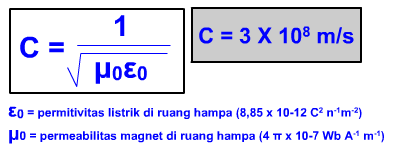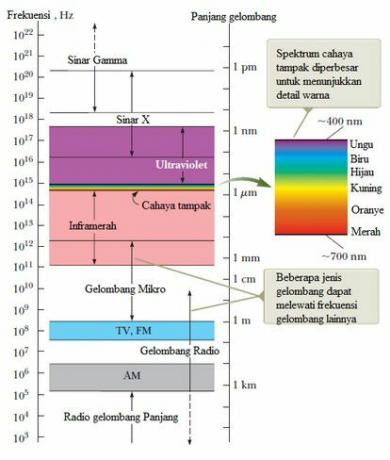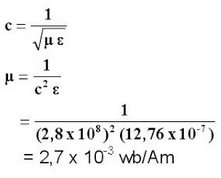Electromagnetic Waves: Definition, Properties, Formulas, Benefits, Spectrum
Electromagnetic Waves: Definition, Properties, Formulas, Benefits, Spectrum - In this discussion we will explain about electromagnetic waves. Which includes the understanding of electromagnetic waves, the nature of electromagnetic waves, the formula of electromagnetic waves, the benefits of waves electromagnetic waves, electromagnetic wave formulas, electromagnetic wave spectrum and examples of electromagnetic waves are discussed in full and easy to understand. For more details, please read the review below carefully.
Table of contents
-
Electromagnetic Waves: Definition, Properties, Formulas, Benefits, Spectrum
- Understanding Electromagnetic Waves
- Properties of Electromagnetic Waves
- Electromagnetic Wave Formula
- Benefits of Electromagnetic Waves
- Electromagnetic Wave Spectrum
- Examples of Electromagnetic Waves
- Share this:
- Related posts:
Electromagnetic Waves: Definition, Properties, Formulas, Benefits, Spectrum
Let's discuss the meaning of electromagnetic waves first.
Understanding Electromagnetic Waves
Electromagnetic waves are waves that radiate without going through a medium that carries electrical and magnetic energy (electromagnetic). Electromagnetic waves do not use a propagation medium, as in other types of waves. Because it does not use a propagation medium, electromagnetic waves are also known as electromagnetic radiation.
There are four theories that form the basis for the existence of electromagnetic waves, namely:
- An electric charge that creates an electric field (proposed by Coulomb)
- The existence of a magnetic field around an electric current (proposed by Oersted)
- Changes in the magnetic flux / magnetic field can cause an electric magnetic field (proposed by Faraday)
- Changes in the electric field can cause a magnetic field (suggested by Maxwell)
Properties of Electromagnetic Waves
According to the Hertz experiment, it can be found that electromagnetic waves have the following properties:
- The electric and magnetic fields are perpendicular to each other and they are perpendicular to the direction of wave propagation.
- One of the transverse waves
- The electric and magnetic fields change at the same time so that they both have maximum and minimum values at the same time and place
- The speed of propagation of electromagnetic waves depends only on the electrical and magnetic properties of the medium through which they are flowed. The speed of propagation of electromagnetic waves in a vacuum is (3.108 m/s)
- The magnitude of the magnetic field and electric field is directly proportional to each other, namely E = c x B.(E = electric field, B = magnetic field, c = speed of electromagnetic waves).
- Not distorted by magnetic or electric fields
- There is reflection, refraction, interference, diffraction, and polarization. Wavelength and frequency are connected via equations. c =. f with the description:
c = speed of light (3,108 m/s)
= Wavelength (m)
f = Frequency (Hz) - No electric charge
Also Read:Specific Gravity: Definition, Formulas, Uses and Differences with Density
Electromagnetic Wave Formula
The speed of propagation of electromagnetic waves by Maxwell is calculated by the following formula:
Benefits of Electromagnetic Waves
The benefits of electromagnetic waves are as follows:
- X-rays have shorter wavelengths and higher frequencies, making them easier to penetrate more material that can not be penetrated by light waves with low frequency absorbed by the material that. X-rays are used by doctors when looking at internal organs such as bones to diagnose patients. Also, x-rays are used at airport flights to see the contents of a passenger's bag or suitcase without having to open it so that the queuing process can be faster.
- Radio waves have a greater range. Radio waves are used for transmitting signals that cannot be reached by radio waves infrared, but the amount of energy transmitted is not as large as that which can be transmitted by waves infrared. Radio waves are used by TV stations, radio and other devices to transmit communication signals. And radio waves are also used for radar in knowing the position of objects above the earth's surface and are also used for satellite imaging to the earth for the needs of making three-dimensional maps.
- Infrared light cannot be seen but can be detected above the red light spectrum which is often used to transfer a form of energy that is not too large. Infrared rays are used on game consoles and some types of remotes so that users do not need cable media to transmit data in the form of energy.
- Microwaves have wavelengths of the order of a few cm and frequencies close to the natural resonance frequencies of water molecules in solids and liquids. Making microwaves quickly absorbed by water molecules in food is like the heating mechanism in a microwave grill like in a microwave oven.
Also Read:Natural Gas: Definition, Composition, Types, Benefits and Properties
Electromagnetic Wave Spectrum
The spectrum of electromagnetic waves includes radio waves, television waves, microwaves, infrared rays, visible light, ultraviolet rays, x rays, gamma rays. Some of these electromagnetic waves have different wavelengths and frequencies. Here is a picture of the wavelength and frequency of some of the electromagnetic wave spectrum.
Examples of Electromagnetic Waves
The following is an example of a problem with electromagnetic waves:
1. Electromagnetic waves in a medium have a speed of 2.8 x 108 m/s. If the permittivity of the medium is 12.76 x 10–7 wb/Am, then what is the permeability of the medium?
Solution:
Is known:
c = 2.8 x 108 m/s
= 12.76 x 10–7 wb/Am
Answer:
Thus it has been explained about Electromagnetic Waves: Definition, Properties, Formulas, Benefits, Spectrum, hopefully it can add to your insight and knowledge. Thank you for visiting and don't forget to read other articles.
